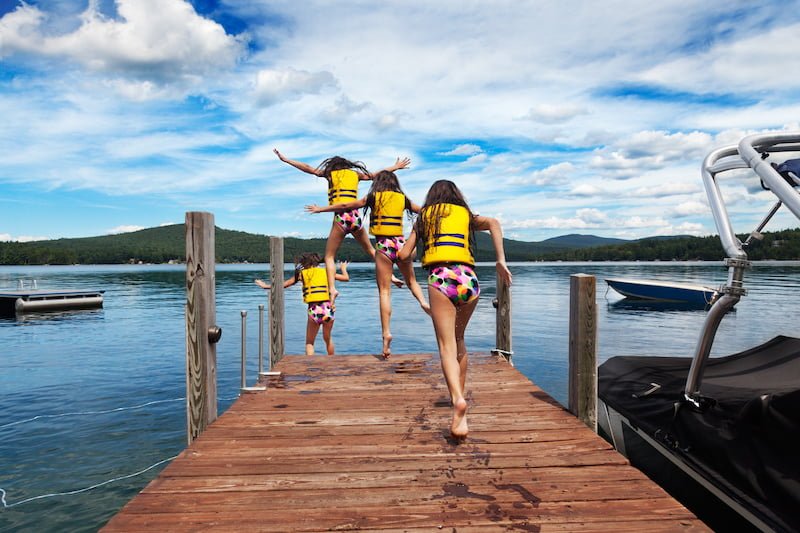Water Safety and Kids
May 15, 2019

With the summer months approaching, families are spending more time outside including both near and in water. For many parents, this exciting time can cause an added deal of stress considering that after birth defects drowning is the number one cause of death for children ages 1-4. Keep in mind, this risk of drowning is not limited to infants and toddlers, as one in five people who die from drowning are children 14 and younger.
Children are naturally curious and adventurous. As a parent, you want your child to be able to enjoy the wonders of life and experience new things but you also want to keep them safe. Here are some water safety tips to keep in mind:
1. Supervision
Any time a child has access to a body of water whether it be a pool, lake, the ocean, a pond, or even a bathtub, it is essential that a trusted adult is keeping a close eye on them. Constant observation may seem tedious but it is essential to prevent any incidents from occurring.
For younger children and weak swimmers, you should get in the water with them. The American Academy of Pediatrics advises that “touch supervision” is an essential component of water safety. Even if you are not swimming but there is a pool or body of water nearby, always keep children within arm’s reach. If you must leave, take the child with you.
Adults who are observing children in the water should themselves be proficient swimmers. This will allow said individuals to respond to any near-drowning incident quickly, preventing lasting damage from occurring.
2. Swim Lessons
The AAP recommends swim lessons as a layer of protection against drowning that can begin for many children starting at age 1. Parent/child classes are a great way to introduce water safety habits and to build swim readiness skills. By age 4, most children are ready for independent swim lessons.
3. Floatation Devices
While teaching a child to get comfortable in the water, it is important to use proper-fitting floatation devices whenever actually in the water or if they are on a floating vessel such as a boat, kayak or canoe. Make sure the floatation device being used is U.S. Coast Guard approved. This additional support will help provide an added degree of safety as they learn to swim.
4. Temperature and Weather
Whenever a child is entering the water, it is important to check the temperature first. Children are far more susceptible to cold injuries and even a small amount of time in frigid water temperatures can cause lasting damage. In addition to temperature considerations, other environmental factors such as wind and lightning should be considered to ensure it is an optimal safety environment.
5. Consider the Setting
Outside of the traditional pool setting, it is important to make additional considerations when children are swimming in the ocean and in lakes. In natural bodies of water, often times there are steep drop-offs without warning. Understanding the general layout of the area is important to ensure the child doesn’t slip and potentially have an orthopedic injury or go under causing a panic.
Another important consideration is when kids are in pools, tubs, or hot tubs. If the chemical balance is off, there is potential for chemical harm to the eyes and GI tract, as well as burns on the skin. Kids should be educated to not swallow water when swimming or bathing.
6. Know the Signs
All parents should be well-versed in how to recognize signs of distress in the water and how to respond when there is trouble. Along with parents, caregivers and older children should learn CPR and safe rescue techniques in order to respond to a drowning incident.
For More Information
You can find more information about water safety for kids and ways to create layers of protection to keep your child safe at healthychildren.org. Talk to your child’s pediatrician about any questions or concerns you may have. He or she can also offer recommendations for swim lessons or CPR certification classes in the Holly Springs area.
